Aces High Air Manuals
Volume 18: WWII German Disc 1
Sprechen sie deutsch? Most of the PDF contents of this CD are in German.
Fighters
Focke-Wulf Fw190
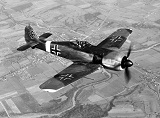
|
Focke-Wulf Fw190 A-1 Würger Flight Manual (German)
73 pages
The Focke-Wulf Fw 190 Würger (English: Shrike) is a German single-seat, single-engine fighter aircraft designed by Kurt Tank in the late 1930s and widely used during World War II. Along with its well-known counterpart, the Messerschmitt Bf 109, the Fw 190 became the backbone of the Luftwaffe's Jagdwaffe (Fighter Force). The twin-row BMW 801 radial engine that powered most operational versions enabled the Fw 190 to lift larger loads than the Bf 109, allowing its use as a day fighter, fighter-bomber, ground-attack aircraft and, to a lesser degree, night fighter.
|

|
Focke-Wulf Fw190 A-5/A-6 Würger Flight Manual (German)
34 pages
The Fw 190A started flying operationally over France in August 1941, and quickly proved superior in all but turn radius to the Royal Air Force's main front-line fighter, the Spitfire Mk. V, especially at low and medium altitudes. The 190 maintained superiority over Allied fighters until the introduction of the improved Spitfire Mk. IX. In November/December 1942, the Fw 190 made its air combat debut on the Eastern Front, finding much success in fighter wings and specialised ground attack units called Schlachtgeschwader (Battle Wings or Strike Wings) from October 1943 onwards. In the opinion of German pilots who flew both the Bf 109 and the Fw 190, the latter provided increased firepower and, at low to medium altitude, manoeuvrability.
|
Focke-Wulf Ta 152

|
Focke-Wulf Ta 152H Höhenjäger (High Fighter) Operation Instructions (German)
9 pages
The Focke-Wulf Ta 152 was a World War II German high-altitude fighter-interceptor designed by Kurt Tank and produced by Focke-Wulf. The Ta 152 was a development of the Focke-Wulf Fw 190 aircraft. It was intended to be made in at least three versions - the Ta 152H Höhenjäger ("high-altitude fighter"), the Ta 152C designed for medium-altitude operations and ground-attack using a different engine and smaller wing, and the Ta 152E fighter-reconnaissance aircraft with the engine of the H model and the wing of the C model.
|
Junkers Ju 87 Stuka
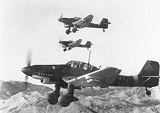
|
Junkers Ju 87 B-2 Stuka Flight Operations (Flugbetrieb) (German)
48 pages
The Junkers Ju 87 or Stuka (from Sturzkampfflugzeug, "dive bomber") was a German dive bomber and ground-attack aircraft designed by Hermann Pohlmann and first flew in 1935. The Ju 87 made its combat debut in 1937 with the Luftwaffe's Condor Legion during the Spanish Civil War. It served the Axis forces in World War II.
The aircraft was easily recognisable by its inverted gull wings and fixed spatted undercarriage. Upon the leading edges of its faired main gear legs were mounted the Jericho-Trompete ("Jericho trumpet") wailing sirens, becoming the propaganda symbol of German air power and the blitzkrieg victories of 1939–1942. The Stuka's design included several innovative features, including automatic pull-up dive brakes under both wings to ensure that the aircraft recovered from its attack dive even if the pilot blacked out from the high g-forces. The Ju 87 operated with considerable success in the close air support and anti-shipping at the outbreak of World War II. It spearheaded the air assaults in the Invasion of Poland in September 1939 and the Norwegian Campaign the following year. In May 1940 the Ju 87s were crucial in the rapid conquest of the Netherlands, Belgium and France against all targets. Although sturdy, accurate, and very effective against ground targets, the Ju 87, like many other dive bombers of the war, was vulnerable to modern fighter aircraft. During the Battle of Britain a lack of manoeuvrability, speed and defensive armament meant that the Stuka required a heavy fighter escort to operate effectively. The Stuka operated with further success after the Battle of Britain, and its potency as a precision ground-attack aircraft became valuable to German forces in the Balkans Campaign, the African and Mediterranean theaters and the early stages of the Eastern Front where it was used for general ground support, but also in the anti-shipping role and as an effective specialised anti-tank aircraft. Once the Luftwaffe lost air superiority, on all fronts, the Ju 87 again became an easy target for enemy fighter aircraft. Despite these developments, because there was no better replacement, the type continued to be produced until 1944. By the end of the conflict, the Stuka had been largely replaced by ground-attack versions of the Focke-Wulf Fw 190, but was still in use until the last days of the war. An estimated 6,500 Ju 87s of all versions were built between 1936 and August 1944. |
Messerschmitt Bf 109

|
Messerschmitt Bf 109 G-2 Flight and Maintenance Manual (English)
26 pages
The Messerschmitt Bf 109, interchangeably called the Me 109 (most often by Allied
pilots and aircrew), was a German World War II fighter aircraft designed by Willy
Messerschmitt and Robert Lusser during the early to mid-1930s. It was one of the
first truly modern fighters of the era, including such features as all-metal
monocoque construction, a closed canopy, a retractable landing gear, and was powered
by a liquid-cooled, inverted-V12 aero engine.
The Bf 109 first saw operational service during the Spanish Civil War and was still in service at the dawn of the jet age at the end of World War II, during which time it was the backbone of the Luftwaffe's fighter force. From the end of 1941 the Bf 109 was supplemented by the Focke-Wulf Fw 190. Originally conceived as an interceptor, later models were developed to fulfill multiple tasks, serving as bomber escort, fighter-bomber, day-, night-, all-weather fighter, ground-attack aircraft, and as reconnaissance aircraft. It was supplied to and operated by several states during World War II, and served with several countries for many years after the war. The Bf 109 was the most produced fighter aircraft in history, with a total of 33,984 airframes produced from 1936 up to April 1945. The Bf 109 was flown by the three top-scoring German fighter aces of World War II, who claimed 928 victories among them while flying with Jagdgeschwader 52, mainly on the Eastern Front, as well as by Hans-Joachim Marseille, the highest scoring German ace in the North African Campaign, scoring 158 victories. It was also flown by several other aces from Germany's allies, notably Finn Ilmari Juutilainen, the highest scoring non-German ace on the type with 58 victories flying the Bf 109G, and pilots from Italy, Romania, Croatia, Bulgaria and Hungary. Through constant development, the Bf 109 remained competitive with the latest Allied fighter aircraft until the end of the war. Photo credit: Kogo@wikipedia License: CC-BY-SA 2.0 |
Messerschmitt Bf 110

|
Messerschmitt Bf 110 Flight Manual (English)
10 pages
The Messerschmitt Bf 110, often (erroneously) called Me 110, was a twin-engine heavy fighter and fighter-bomber developed in Nazi Germany in the 1930s and used by the Luftwaffe and others during World War II. Hermann Goering was a proponent of the Bf 110. It was armed with two MG FF 20 mm cannons, four 7.92 mm (.312 in) MG 17 machine guns, and one 7.92 mm (.312 in) MG 15 machine gun or twin-barrel MG 81Z for defence.
|
Messerschmitt Me 210
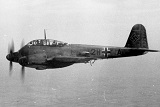
|
Messerschmitt Me 210 Operating Instructions (German)
88 pages
The Messerschmitt Me 210 was a German heavy fighter and ground-attack aircraft of World War II. The Me 210 was designed to replace the Bf 110; design started before the opening of World War II. The first examples of the Me 210 were ready in 1939, but they proved to have unacceptably poor flight characteristics from serious wing planform and fuselage design flaws. A large-scale operational testing program throughout 1941 and early 1942 did not cure the aircraft's problems. The design entered limited service in 1943, but was almost immediately replaced by the Messerschmitt Me 410 Hornisse ("Hornet").
|
Messerchmitt Me 262
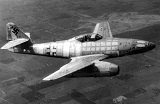
|
Messerchmitt Me 262 Schwalbe Pilot's Handbook (English)
27 pages
The Messerschmitt Me 262, nicknamed Schwalbe (German: "Swallow") in fighter versions, or Sturmvogel (German: "Storm Bird") in attack versions, was the world's first operational jet-powered fighter aircraft. Design work started before World War II began, but engine problems and top-level interference kept the aircraft from operational status with the Luftwaffe until mid-1944. The Me 262 was faster, and more heavily-armed than any Allied fighter, including the British jet-powered Gloster Meteor. One of the most advanced aviation designs in operational use during World War II, the Me 262 was used in a variety of roles, including light bomber, reconnaissance, and even experimental night fighter versions.
Me 262 pilots claimed a total of 542 Allied kills, although higher claims are sometimes made. The Allies countered its potential effectiveness in the air by attacking the aircraft on the ground and during takeoff and landing. Engine reliability problems, from the pioneering nature of its Junkers Jumo 004 axial-flow turbojet engines - the first ever placed in mass production - and attacks by Allied forces on fuel supplies during the deteriorating late-war situation also reduced the effectiveness of the aircraft as a fighting force. In the end, the Me 262 had a negligible impact on the course of the war as a result of its late introduction and the consequently small numbers put in operational service. While German use of the aircraft ended with the close of the Second World War, a small number were operated by the Czechoslovak Air Force until 1951. Captured Me 262s were studied and flight tested by the major powers, and ultimately influenced the designs of a number of post-war aircraft such as the North American F-86 Sabre and Boeing B-47 Stratojet. A number of aircraft have survived on static display in museums, and there have also been several privately built flying reproductions. |
Bombers
Arado Ar 234
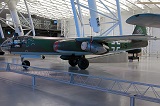
|
Arado Ar 234B-2 Blitz Bomber Operation Card for the Aircraft Commander (German)
20 pages
The Arado Ar 234 Blitz (German: lightning) was the world's first operational jet-powered bomber, built by the German Arado company in the closing stages of World War II.
Produced in very limited numbers, it was used almost entirely in the reconnaissance role, but in its few uses as a bomber it proved to be nearly impossible to intercept. It was the last Luftwaffe aircraft to fly over Britain during the war, in April 1945. Photo credit: Kogo@wikipedia (GFDL) |
Dornier Do 17
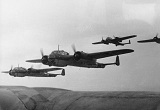
|
Dornier Do 17M/P Fiegender Bleislift (Flying Pencil) Operating Instructions (German)
31 pages
The Dornier Do 17, sometimes referred to as the Fiegender Bleislift ("flying pencil"), was a World War II German light bomber produced by Claudius Dornier's company, Dornier Flugzeugwerke. It was designed as a Schnellbomber ("fast bomber"), a light bomber which, in theory, would be so fast that it could outrun defending fighter aircraft.
The Dornier was designed with two engines mounted on a "shoulder wing" structure and possessed a twin tail fin configuration. The type was popular among its crews due to its handling, especially at low altitude, which made the Do 17 harder to hit than other German bombers. Photo credit: Bundesarchiv Bild (CC BY-SA 3.0 de) |
Dornier Do 217

|
Dornier Do 217 N-1 N-1 Pilots Notes (German)
39 pages
The Dornier Do 217 was a bomber used by the German Luftwaffe during World War II as a more powerful version of the Dornier Do 17, known as the Fiegender Bleislift (German: "flying pencil"). Designed in 1937 and 1938 as a heavy bomber but not meant to be capable of the longer-range missions envisioned for the larger Heinkel He 177, the Do 217's design was refined during 1939 and production began in late 1940. It entered service in early 1941 and by the beginning of 1942 was available in significant numbers.
|
Focke-Wulf Fw 191
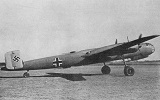
|
Focke-Wulf Fw 191 Technical Manual (German)
31 pages
The Focke-Wulf Fw 191 was a prototype German bomber of World War II, as the Focke-Wulf firm's entry for the Bomber B advanced medium bomber design competition. Two versions were intended to be produced, a twin-engine version using the Junkers Jumo 222 engine and a four-engine variant which was to have used the smaller Daimler-Benz DB 605 engine. The project was eventually abandoned due to technical difficulties with the engines.
|
Heinkel He 111
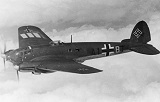
|
Heinkel He 111-H Brief Instructions 1938 (German)
52 pages
The Heinkel He 111 was a German aircraft designed by Siegfried and Walter Günter at Heinkel Flugzeugwerke in 1934. Through development it was described as a "wolf in sheep's clothing" because the project masqueraded the machine as civilian transport, though from conception the Heinkel was intended to provide the nascent Luftwaffe with a fast medium bomber.
Photo credit: Bundesarchiv Bild (CC BY-SA 3.0 de) |
Junkers Ju88

|
Junkers Ju-88 Pilots Notes (English)
47 pages
The Junkers Ju 88 was a German World War II Luftwaffe twin-engined multirole combat aircraft. Designed by Junkers Flugzeug und Motorenwerke (JFM) in the mid-1930s to be a so-called Schnellbomber ("fast bomber") which would be too fast for any of the fighters of its era to intercept, it suffered from a number of technical problems during the later stages of its development and early operational roles, but became one of the most versatile combat aircraft of the war. Like a number of other Luftwaffe bombers, it was used successfully as a bomber, dive bomber, night fighter, torpedo bomber, reconnaissance aircraft, heavy fighter and even, during the closing stages of the conflict in Europe, as a flying bomb.
|
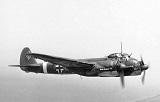
|
Junkers Ju 88A-4 Instruction Manual (German)
170 pages
Photo credit: Bundesarchiv Bild (CC BY-SA 3.0 de) |

|
Junkers Ju88A-4D-1 Operating Instructions (German)
57 pages
Photo credit: Bundesarchiv Bild (CC BY-SA 3.0 de) |
Others
Arado Ar 96

|
Arado Ar 96 B Brief Instructions (German)
85 pages
The Arado Ar 96 was a German single-engine, low-wing monoplane of all-metal construction produced by Arado Flugzeugwerke. It was the Luftwaffe's standard advanced trainer during World War II.
|
Buecker Bu 181
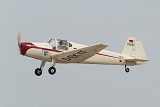
|
Bücker Bu 181 Bestmann Operating Instructions (German)
30 pages
The Bücker Bü 181 Bestmann was a two-seater, single-engine aerobatic monoplane aircraft built by Bücker Flugzeugbau GmbH in Rangsdorf, near Berlin and extensively used by the Luftwaffe in World War II. Its name Bestmann is after a German maritime term designating a member of the deck crew on coastal or fishing vessels.
Photo credit: bomberpilot@wikipedia (CC BY-SA 2.0) |
Blohm & Voss BV 141
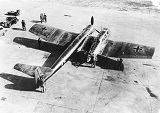
|
Blohm & Voss BV 141 B-1 Operating Instructions (German)
93 pages
The Blohm & Voss BV 141 was a World War II German tactical reconnaissance aircraft. It is notable for its uncommon structural asymmetry. Although the BV 141 performed well, it was never ordered into full-scale production, for reasons that included the unavailability of the preferred engine and competition from another tactical reconnaissance aircraft, the Focke-Wulf Fw 189.
Photo credit: Bundesarchiv Bild (CC BY-SA 3.0 de) |
Focke-Wulf Fw58

|
Focke-Wulf Fw58 Weihe (Harrier) Operating Instructions (German)
17 pages
The Focke-Wulf Fw 58 Weihe ("Harrier") was a German aircraft, built to fill a request of the Luftwaffe for a multi-role aircraft to be used as advanced trainer for pilots, gunners and radio operators.
Photo credit: Bundesarchiv Bild (CC BY-SA 3.0 de) |
Gotha Go 242
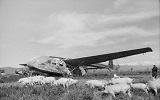
|
Gotha Go 242 B C 244 Instruction Manual (German)
40 pages
The Gotha Go 242 was a transport glider used by the Luftwaffe during World War II. It was an upgrade over the DFS 230 in both cargo/troop capacity and flight characteristics. Though it saw limited action, it appeared in multiple variants.
Photo credit: Bundesarchiv Bild (CC BY-SA 3.0 de) |
Messerschmitt Bf 108

|
Messerschmitt Bf 108B Taifun Brief operating manual (German)
35 pages
The Messerschmitt Bf 108 Taifun is a German single-engine sport and touring aircraft developed by Bayerische Flugzeugwerke (Bavarian Aircraft Works) in the 1930s. The Bf 108 is of all-metal construction.
|

|
Messerschmitt Bf 108D-1 Taifun Operating Instructions (German)
36 pages
Bf 108s and postwar Nord 1000s played the role of Messerschmitt Bf 109 fighters in war movies, including The Longest Day, The Great Escape, 633 Squadron, Mosquito Squadron, and Von Ryan's Express.
|
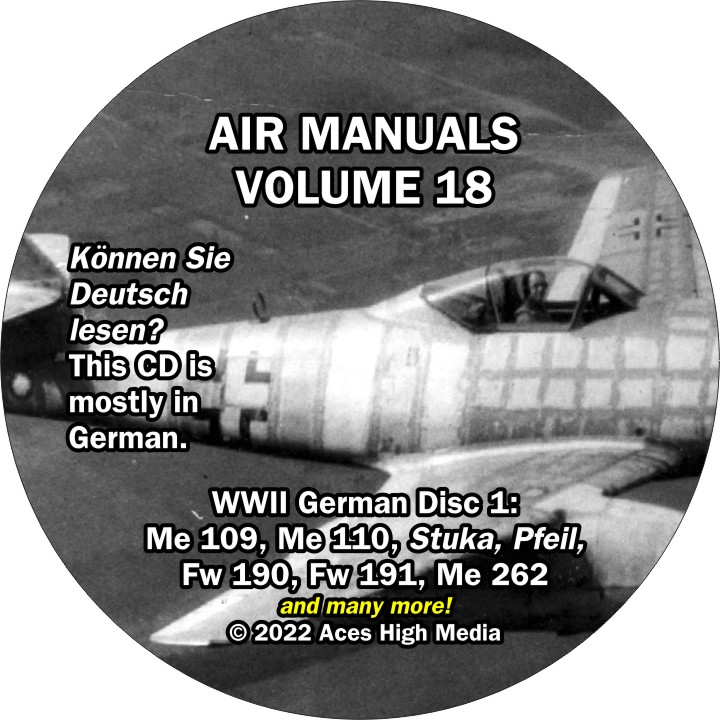
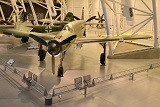
Photo credit: Guinnog@wikimedia (CC BY-SA 3.0)